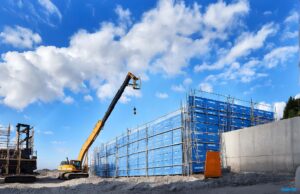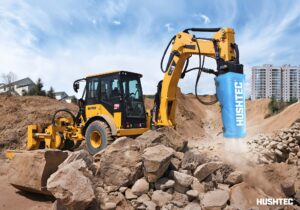Infrastructure and urban development projects face major challenges from infrastructure urban development noise dust debris. Hushtec provides tailored solutions to ensure safety, compliance, and community protection. This article explores key issues and practical strategies that align with standards for sustainable, responsible urban growth.
Managing Infrastructure Urban Development Noise Dust Debris
The Noise Challenge

Heavy machinery, pile driving, and continuous operations cause disruptive noise. Infrastructure urban development noise dust debris affects communities, reduces productivity, and impacts worker health.
Solutions for Noise Management
To reduce noise impact and stay compliant:
-
Soundproof Barriers: Install acoustic barriers for construction to contain noise.
-
Equipment Upgrades: Use modern, quieter machinery and schedule regular maintenance.
-
Operational Timing: Limit noisy activities to daytime or non-peak hours.
-
Worker PPE: Provide earplugs or noise-canceling headsets to protect hearing.
-
Compliance: Follow OSHA and local noise ordinances to meet regulations.
The Dust Challenge
Construction and demolition generate large amounts of dust, leading to respiratory issues, reduced air quality, and visibility hazards.
Dust Control Strategies
Effective dust control includes:
-
Watering Systems: Spray water to suppress dust during dry and windy conditions.
-
Vegetative Cover: Plant temporary vegetation or ground cover to stabilize soil.
-
Dust Monitoring: Deploy air quality monitors to adjust measures as needed.
-
Low-Dust Methods: Use off-site prefabrication and enclosed cutting equipment.
-
Compliance: Align with EPA air quality standards and local regulations.
The Debris Challenge

Unmanaged debris leads to safety hazards, inefficiency, and environmental risks in infrastructure urban development noise dust debris projects.
Effective Debris Management Solutions
To manage debris responsibly:
-
Recycling Programs: Sort and repurpose concrete, wood, and metals on-site.
-
Hazardous Waste Protocols: Identify and handle dangerous waste safely.
-
On-Site Sorting: Establish facilities for fast sorting and disposal.
-
Regular Clean-Ups: Maintain clean worksites for safety and community trust.
-
Compliance: Follow local waste management and environmental laws.
For additional protection against industrial-scale noise, dust, and debris, explore our industrial soundproofing products.
Conclusion
Addressing noise, dust, and debris in infrastructure and urban development is essential for compliance, safety, and sustainability. By adopting proactive strategies, project managers can minimize environmental impact, improve community relations, and ensure regulatory compliance.
With the right solutions, infrastructure projects can deliver growth while protecting workers, residents, and ecosystems—building resilient, thriving cities for the future. Explore the industries we serve or contact Hushtec today to learn how we can support your next project.





